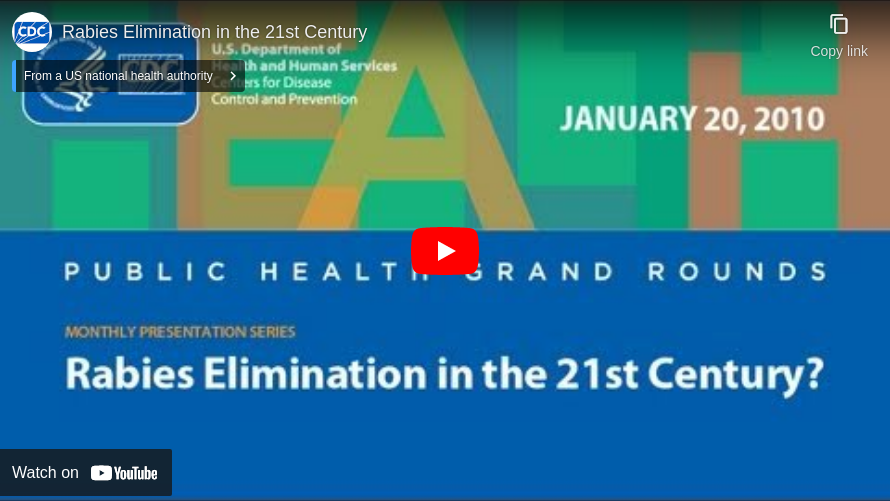Rabies Elimination in the 21st Century?
Presented on .
Rabies, a viral zoonotic disease, can be spread to humans through bites or scratches from infected wild or domestic animals. Without prompt and proper wound cleansing and immunization, rabies can lead to death in humans – more than 55,000 people worldwide die from this disease every year. Fortunately, rabies is a vaccine-preventable disease. The most cost-effective strategy for preventing rabies in people is by eliminating rabies in dogs through vaccination. However, recent increases in human rabies deaths in parts of Africa, Asia and Latin America suggest that rabies is re-emerging as a serious public health issue.
This session of Grand Rounds addressed traditional and new approaches to disease prevention and control, the importance of evidence–based strategies and interventions for human prophylaxis and animal control, and discussed current opportunities and challenges in eliminating this disease in both developed and developing countries.
- Charles E. Rupprecht, VMD, PhD, MS
- Chief, Rabies Program, Poxvirus Rabies Branch
Division of High-Consequence Pathogens and Pathology
National Center for Emerging and Zoonotic Infectious Diseases, CDC
- Dennis Slate, PhD, MS
- National Rabies Management Coordinator
Animal and Planet Health Inspection Service
US Department of Agriculture
- Luis Fernando Leanes, MVD, MSc
- Advisor, Veterinary Public Health Unit
Pan American Health Organization
World Health Organization
- Deborah Briggs, PhD
- Director
Global Alliance for Rabies Control
- Tanja Popovic, MD, PhD
- Scientific Director
Get notified about the latest updates from Public Health Grand Rounds right in your inbox by setting up an alert today!
Get notified about the latest updates from Public Health Grand Rounds right in your inbox by setting up an alert today!Sign Up
Get notified about the latest updates from Public Health Grand Rounds right in your inbox by setting up an alert today!
